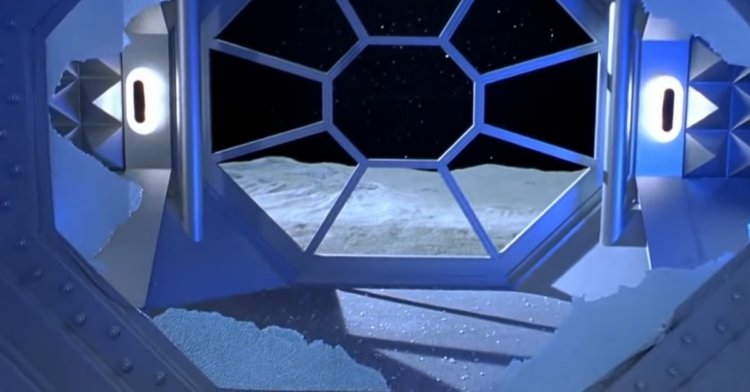No matter how much we may not want to think about it, we have to face the fact that at some point, the world will come to an end.
As space.com explained , there will eventually come a time when the sun runs out of hydrogen to convert into helium and expands outward — burning us up in the process. It’s extremely unlikely that any of us will still be alive when this comes to pass, but there are other worrying signs that we could die out long before before the sun has a chance to take us with it.
Such concerns have led scientists to come up with contingency plans for the survival of this planet’s diverse array of life forms and one team has recently cooked up a very ambitious one.
By now, there’s a good chance you’ve heard of the Global Seed Vault in Norway’s Svalbard archipelago.

According to Time , this vault contains millions of seeds from 930,000 different food crops and shelters them not only in the event of a doomsday scenario, but to address localized disasters that would otherwise wipe specific plant species out.
But as important as the seed vault is for biodiversity and as important as it could potentially be for our survival, there’s not much it can do if it doesn’t have a world to stand on.

And as CNN reported , that is precisely why scientists from the University of Arizona propose building a moon base meant to provide a similar “modern global insurance policy” for 6.7 million species throughout the world.
If completed — and construction is nowhere near beginning — this base would preserve life from this planet in the event of the “total annihilation of Earth.”
Much like the Global Seed Vault, this proposed base would contain millions of seed samples.

However, that only covers one classification of life on Earth so among those millions of preserved samples would also be spores from various plant species as well as the sperm and eggs from various animal species — including humans.
As Jekan Thanga from the University of Arizona College of Engineering said, “Because human civilization has such a large footprint, if it were to collapse, that could have a negative cascading effect on the rest of the planet.”
And even if we take our own influence on the planet’s decline out of the equation, there would still be reason to think this project would come in handy.

As Thanga put it, “Earth is naturally a volatile environment. As humans, we had a close call about 75,000 years ago with the Toba supervolcanic eruption, which caused a 1,000-year cooling period and, according to some, aligns with an estimated drop in human diversity.”
So now that we’ve gone over why Thanga and his colleagues are suggesting this course of action, let’s get into how they plan to do it.
The researchers envision a great underground ark that would store the cryogenically preserved genetic materials in a series of tunnels and caves under the moon’s surface.

As CNN reported, the ark would be powered by solar panels and would require the construction of large elevator shafts to access the preservation facility.
The ark would specifically be sheltered among a series of 200 underground lava tubes that were discovered on the moon back in 2013.

As they see it, these tunnels (not pictured) provide an ideal shelter for the genetic materials since the tubes — which tend to measure about 328 feet in diameter — would be able to protect them from solar radiation, small meteorite strikes, and fluctuating temperatures on the surface.
However, that doesn’t mean the project would be ready to go even if someone was willing to put the required resources into it tomorrow.

That’s because the team pointed out that the seeds would need to be kept at temperatures of -292 degrees Fahrenheit to be properly preserved, while the animal cells need to be stored at -320 degrees Fahrenheit.
The problem is that you’re not likely to build a base that could withstand those kinds of temperatures since they would also freeze the base’s metal parts and even weld them together.
But if that can somehow be ironed out, the idea of building on the moon may not be as big of a hurdle as it sounds.

As the BBC reported , Russian and Chinese space agencies have agreed to construct a lunar space station that they intend to be available for other nations to use.
But even if technologies improve to the point that the University of Arizona researchers’ plan is viable, it’s clear that some serious resources would be needed to back it up.
After all, even getting 50 samples from the 6.7 million species earmarked for preservation would require an estimated 250 rocket launches.
h/t: CNN

















































